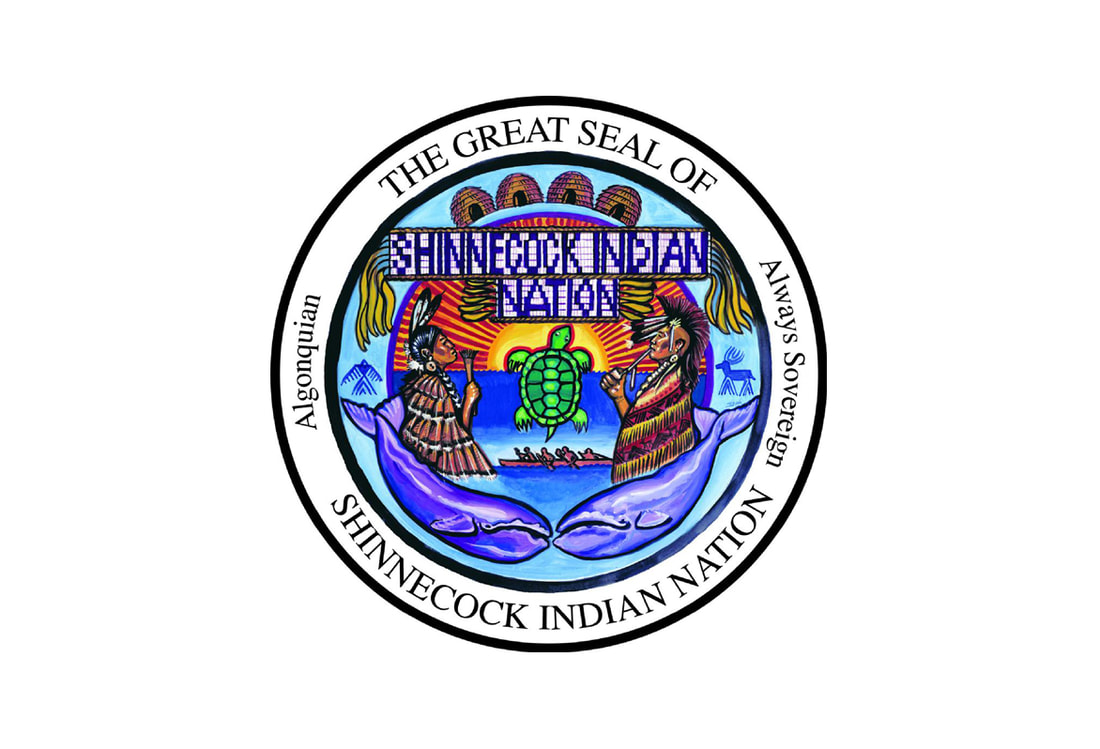
- Details
- By Jenna Kunze
A group of Shinnecock Nation grave protectors on Long Island, New York, will hold a rally at the Southampton Town hall next Monday, August 5, to ask city officials to better preserve and protect their sacred lands, according to the group.
For decades now, an inter-tribal coalition, called the Shinnecock Graves Protection Warrior Society, has been working to preserve their ancestral homelands from over-development in the town of Southampton. In the area, comprising seven villages that consistently ranks among the most expensive area codes in the United State, the Shinnecock Nation has been up against old money, and the power it holds, for generations.
When settlers arrived on the Shinnecock Nation’s shores in 1640, the Nation eventually gave the newcomers a swath of land to live on. But the settlers wanted more–and eventually stole everything but 3,600 acres of land from their new neighbors. In 1703, the town offered the Shinnecock a thousand-year lease to live on those 3,600 acres in an area known as the Shinnecock Hills in Southampton but later broke that lease by falsifying records in 1859.
Since 1859, the Shinnecock Nation territory has been reduced by nearly 80 percent and moved to lower land on a peninsula on the island’s south shore.
But the tribe’s ancestral burial grounds remained in Shinnecock Hills, an area with the town of Southampton so beautiful that everyone wants a piece of it: business owners, developers, homeowners—there’s even four golf courses within the traditional territory. Over the years, all but 250 acres of available land in Shinnecock Hills has been purchased and developed by private citizens, citizen Becky Genia said.
The Grave Protection Warriors’ main request is for the town to use its Community Preservation Fund, a fund dedicated to land preservation, to buy up the remaining available land in the hills for preservation. The cost, at roughly a million dollars an acre, would be $250 million.
The preservation fund, which is paid for by a 2 percent real estate transfer tax, has generated more than $1.1 billion since its inception in 1999. It has spent roughly $739 million on its purchases, according to a 2020 report on the town’s website. As of January 2022, the available unrestricted balance for the Community Preservation Fund was $152.7 million, according to Stephanie Leibowitz, research technician at the Town of Southampton.
The rally will be held at 12 p.m. at 116 Hampton Road, Southampton.
More Stories Like This
50 Years of Self-Determination: How a Landmark Act Empowered Tribal Sovereignty and Transformed Federal-Tribal RelationsPrairie Band Potawatomi Native Divests Its ICE Contract
Breaking: Lumbee Tribe Set for Federal Recognition Under NDAA Passed by Senate
Treasury Finalizes Tribal Tax Rules Ending Decades of Uncertainty
Finalized Tax Rules Seen as Historic Win for Tribal Economies
Help us defend tribal sovereignty.
At Native News Online, our mission is rooted in telling the stories that strengthen sovereignty and uplift Indigenous voices — not just at year’s end, but every single day.
Because of your generosity last year, we were able to keep our reporters on the ground in tribal communities, at national gatherings and in the halls of Congress — covering the issues that matter most to Indian Country: sovereignty, culture, education, health and economic opportunity.
That support sustained us through a tough year in 2025. Now, as we look to the year ahead, we need your help right now to ensure warrior journalism remains strong — reporting that defends tribal sovereignty, amplifies Native truth, and holds power accountable.
 The stakes couldn't be higher. Your support keeps Native voices heard, Native stories told and Native sovereignty defended.
The stakes couldn't be higher. Your support keeps Native voices heard, Native stories told and Native sovereignty defended.
Stand with Warrior Journalism today.
Levi Rickert (Potawatomi), Editor & Publisher


